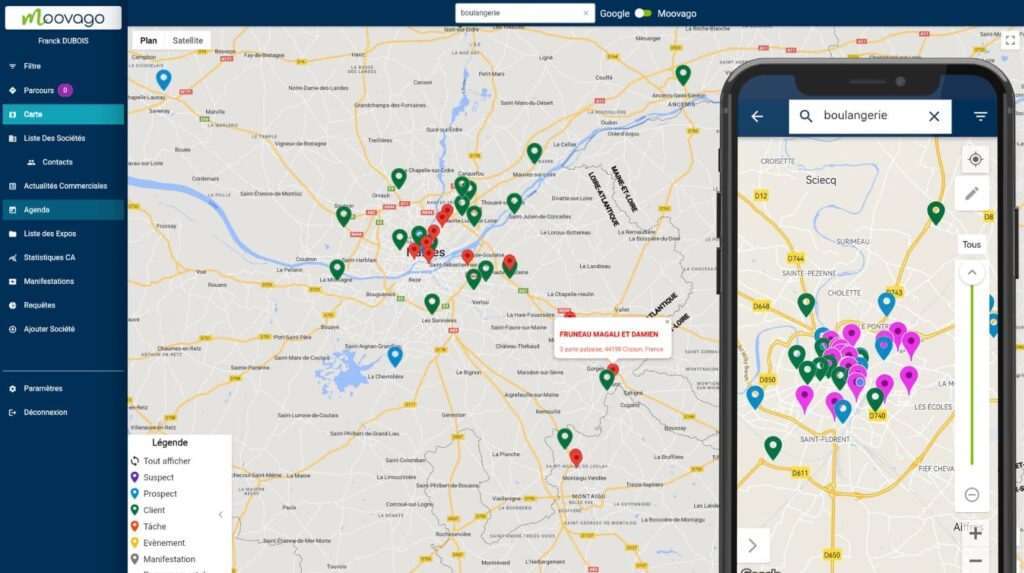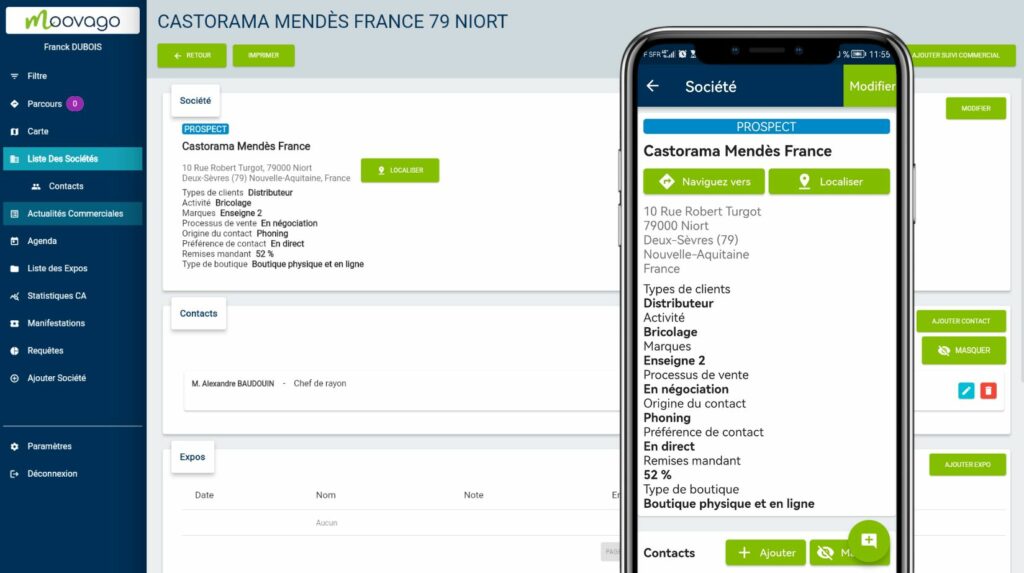Definition of a Merchandising Salesperson
Definition
The job of a merchandising salesperson involves optimizing the presentation and enhancement of products at the point of sale to maximize sales.
It’s a key job for companies wishing to maximize their in-store sales.
Themerchandising salesperson implements the company’s merchandising strategy.
Generally speaking, this sales professional has to take into account space constraints, sales objectives, product characteristics and customer expectations.
The merchandising salesperson is also responsible for ensuring product availability in store.
Finally, the merchandising salesperson is often called upon to carry out merchandising checks or shelf analyses, often using merchandising software.

Other names for Commercial merchandising
The merchandising salesperson may be called a “merchandiser” or “merchandising manager”.
Be careful, however, as the term “merchandiser” can also refer to the person responsible for stocking shelves for a given brand (whether self-employed or on the brand’s payroll), thus excluding all missions linked to sales (negotiation).
Missions of the merchandising salesperson
Merchandising salespeople’s missions vary according to their status. They will not have the same responsibilities and missions if they are on the payroll of a brand, if they are employed by an agency offering sales force services, or if they are self-employed.
1. Implement merchandising strategy
In the company, the merchandising salesperson works closely with the marketing and store teams to ensure the implementation of the company’s merchandising strategy, in line with sales policy.
More generally, this sales professional must take into account space constraints, sales objectives, product characteristics and customer expectations.
Store documents supplied by your principals (sales kits, sales pitches, event schedules, product catalogs, etc.) directly in Moovago, and find them wherever you are.
Find out how to add documents to a principal/company in Moovago.
2. Canvass sales outlets (supermarkets, hypermarkets, DIY stores)
Responsible for sales development in a given geographical area, the merchandising salesperson is in charge of canvassing new partner outlets to distribute his or her brand’s products.
Point-of-sale canvassing is a crucial step for merchandising sales staff, enabling them to develop their brand’s presence in the market. To do this, they must identify potential points of sale in their geographical area and contact them to offer distribution of their brand’s products.
In Moovago, search the map for the type of business you’re interested in distributing your products to. For example, “Bakery”. The application will then display the bakeries in the area on the map. By clicking on a marker, you can quickly transform the marker into a company file.

3. Prepare your sales negotiation
After selecting, canvassing and securing an appointment with a sales outlet, the merchandising salesperson will have to prepare the sales negotiation with the retailer.
If the merchandising manager works for the brand, he will be supported in these negotiations by the key account manager. On the other hand, if they work for the retailer, they will negotiate directly with in-house department managers.
If you’re a Moovago user, you can prepare your appointment in advance by accessing all the information linked to this outlet from its company file.

From a company file, you can find :
- information on the sales outlet: is it a supermarket? a DIY store? a hypermarket?
- information on the contact(s) for the negotiation: name, position, past interactions with this person…
- the principal (or brand) associated with this company or brand name
- discounts, ratings, comments…
And much more, depending on what YOU think is relevant.
The merchandising salesperson must therefore be a good negotiator and have a good knowledge of the market and consumer trends. They must also be able to analyze the needs of each sales outlet and propose solutions adapted to their activity and clientele.
Once contact has been established with the points of sale, the merchandising salesperson must convince them of the quality of his or her products and the benefits of distributing them. He or she must also be able to answer any questions they may have, and reassure them about distribution terms, delivery times, payment conditions, and so on.
4. Control merchandising strategy
In addition to reporting sales revenue, the merchandising salesperson is also responsible for reporting on behalf of the brand for which he/she works.
This can involve taking photos of the shelf, writing up quick reports to record price quotes, information on the competition… and lots of other useful field information!
This is important information for thesales representative, as it may have an impact on future negotiations with the brand, and will also be of interest to marketing teams if he or she works for a company with a marketing team.
5. Drawing up order forms
Finally, once distribution agreements have been signed, the merchandising salesperson may be called upon to ensure that products are properly displayed in stores, in line with the brand’s merchandising policy.
Part of this role may involve stock monitoring, to ensure that products are available in store, and that orders are placed on time. They work with logistics teams to ensure proper stock management and avoid stock-outs.
Depending on what he observes in the point of view, he will seek to propose appropriate solutions where necessary and optimize the brand’s in-store performance.
6. Follow-up of store events and promotional actions
This is important information for the sales representative, as it will impact the effectiveness of his actions, but it’s just as important for marketing teams, if he works in a company with a dedicated department.
7. Track sales for each outlet
Sales follow-up is a crucial aspect of the merchandising sales profession:
- to measure the impact of merchandising actions on sales
- to track sales revenue trends at different sales outlets.
The merchandising tools used to track sales revenue are numerous, and will vary according to the organization of each sales outlet. Mobile sales representatives can use sales tracking tools such as CRM (Customer Relationship Management).
They can be used to centralize sales data, analyze the performance of each outlet and track sales revenue over time. Thanks to this information, merchandising sales staff can adjust their positions to negotiate more space for brand animations, or a more advantageous product layout.
8. Carry out linear surveys
What to do if products are no longer on the shelves, victims of their own success? If the store doesn’t have a system for automatically sending new orders to the supplier in the event of a stock shortage, it may be up to the merchandising salesperson to take charge.
By scanning the product references on the shelf, he can quickly generate an Order form, and send it to his principal/company in a matter of moments.
9. Carry out merchandising controls
Although this is less common, merchandising sales staff may be called upon to carry out merchandising checks, or more in-depth shelf analyses than simple shelf surveys.
What training do you need to become a merchandising salesperson?
The merchandising sales profession is accessible at various levels of education, but specialized training in the field is generally required. The most common qualifications are :
- BTS MCO (Operational Sales Management),
- or a DUT TC (Marketing Techniques).
Junior profiles can be recruited asassistant merchandiser or field sales representatives to gain practical experience of the business.
What skills do you need to become a merchandising salesperson?
The skills and qualities required to work as a merchandising salesperson are varied:
- A good knowledge of sales techniques,
- Be able to adapt quickly to market changes,
- Propose innovative solutions,
- A good command of IT tools: to ensure efficient management of sales and inventory data, using a CRM for example,
- Excellent interpersonal skills: to be able to collaborate with the various players in the sector (customers, distributors, internal brand teams, etc.) and maintain relationships of trust with business partners.
